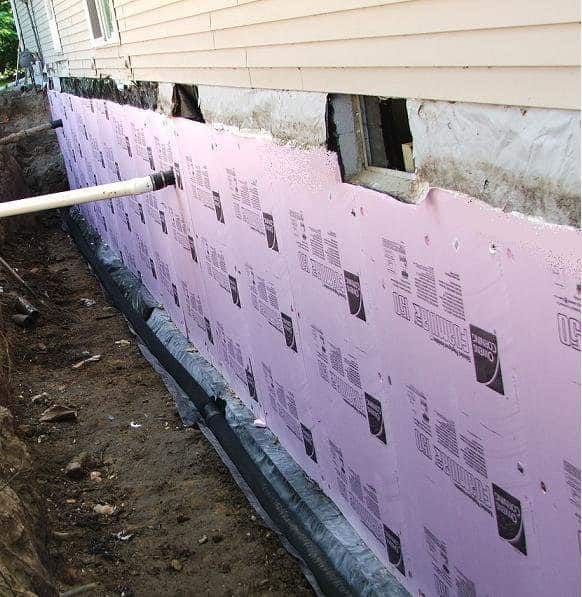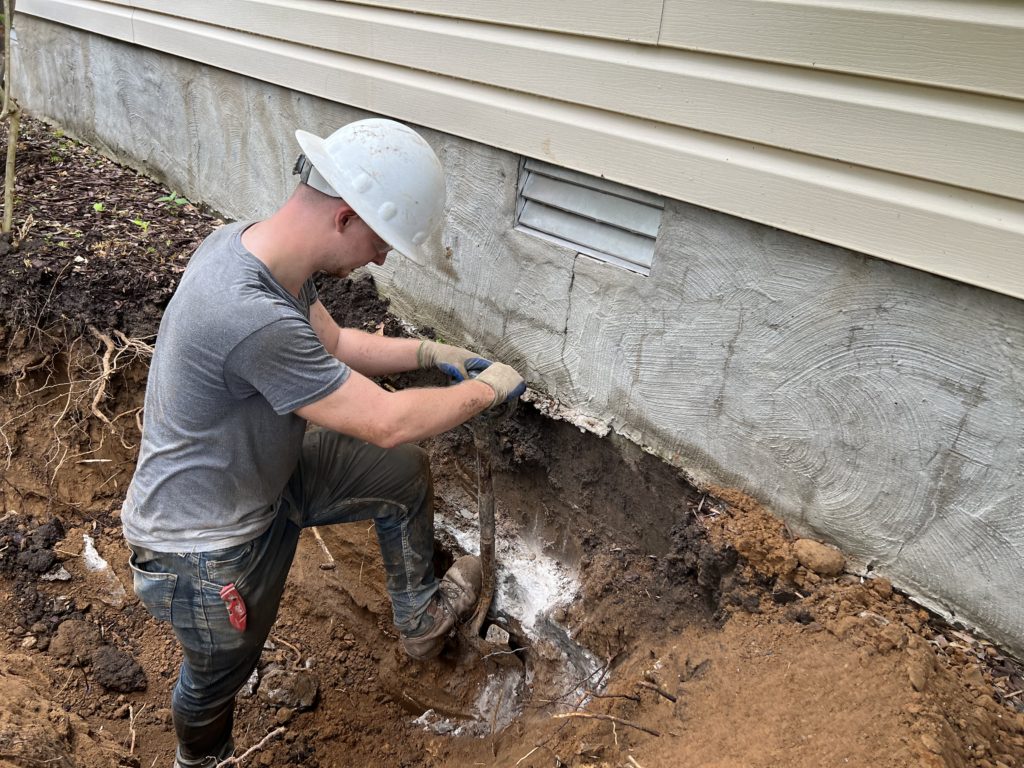Foundation Repair Techniques: A Thorough Summary
Structure Fixing Techniques: An Extensive Summary
Structure issues can trigger substantial structural damage to structures, jeopardizing their stability and security. Comprehending structure fixing techniques is critical for homeowners, engineers, and service providers associated with building and construction and upkeep tasks. This detailed overview provides a detailed evaluation of various methods utilized to attend to foundation issues, guaranteeing a solid and safe structure for any type of structure.
The guide covers crucial techniques such as piece jacking, pier and beam of light support, cellar wall anchoring, soil stablizing, and structure underpinning. Each technique is clarified extensive, highlighting its function, application, and performance. FCS Foundation Repair Dallas concrete foundation services. In addition, the overview talks about variables to consider when choosing the suitable repair technique, such as soil conditions, constructing kind, and financial restrictions
Whether you are a property owner seeking to address foundation concerns or an expert in the construction industry, this detailed review works as an useful resource, offering necessary knowledge and insights into foundation repair service techniques.
Slab Jacking
Slab jacking, typically utilized as a reliable and frequently used technique, increases sunken concrete pieces by infusing a supporting product below, effectively restoring the foundation to its original degree. This technique is typically made use of in circumstances where the ground has actually cleared up or moved, triggering concrete pieces to sink or come to be irregular. Piece jacking is a cost-effective alternative to entirely changing the concrete, as it deals with the root cause of the problem and provides a long-lasting remedy.

One of the major benefits of slab jacking is its minimally intrusive nature. The tiny holes pierced for the injection procedure can quickly be patched, leaving no visible signs of repair. Additionally, slab jacking can be completed promptly, often within a day, minimizing disturbance to the home proprietor. This method is appropriate for a vast array of concrete structures, consisting of driveways, pathways, outdoor patios, and basement floorings.
Pier and Light Beam Support
One more commonly used technique in structure repair service is pier and beam support, which develops upon the previous method of piece jacking to offer additional architectural support and stability to the structure. This technique is specifically helpful in locations with weak soil conditions or when the structure has received significant damages.
Pier and beam of light support involves setting up vertical concrete or steel piers under the structure to move the weight of the structure to much deeper, much more steady dirt layers. These piers are purposefully positioned along the perimeter of the foundation and at indoor bearing walls to evenly disperse the tons and prevent further settlement.
To enhance the light beams, extra steel or concrete assistances are included to strengthen and maintain the existing beams. This is done by affixing steel braces or beam of lights to the existing beams and protecting them with screws or other fasteners. The support products are selected based on the specific needs of the structure and the extent of the damages.
Pier and light beam reinforcement not only supplies immediate support to the foundation however also aids to stop future negotiation and structural damages. Pier and Beam Foundation Repair Dallas. By redistributing the lots and moving it to more powerful dirt layers, this strategy guarantees the lasting stability and integrity of the structure
Cellar Wall Anchoring
Cellar wall surface anchoring is a crucial strategy used in structure repair work to boost the security and architectural integrity of the foundation, specifically in areas prone to soil motion and cellar wall failing. When the soil around a structure experiences too much wetness or changes as a result of geological variables, it can exert substantial pressure on the basement wall surfaces, triggering them to split, bow, or perhaps collapse. This can result in serious architectural issues and jeopardize the security of the whole structure.
Cellar wall securing entails setting up specialized supports or helical tiebacks into the ground beside the structure walls. These anchors are developed to pass through deep right into steady soil or bedrock, producing a solid link in between the ground and the foundation. By dispersing the lots of the foundation evenly and standing up to the side pressures put in by the dirt, basement wall anchoring offers additional assistance and protects against additional activity or deterioration of the walls.
There are various sorts of cellar wall anchoring systems available, consisting of steel wall supports, helical tiebacks, and carbon fiber straps. The selection of system depends upon variables such as the intensity of the wall movement, dirt conditions, and the particular needs of the foundation. Expert foundation repair professionals evaluate these factors and suggest the most ideal anchoring option for every special circumstance.
Soil Stablizing
To resolve the difficulties of soil motion and guarantee the security of structures, soil stabilization methods are employed in foundation repair work. Soil stablizing refers to the process of enhancing the buildings of the soil to enhance its load-bearing capability and minimize its susceptibility to movement. There are several methods used for dirt stablizing, each customized to the particular qualities of the dirt and the needs of the structure.

Mechanical stablizing is one more extensively made use of method that includes the physical modification of the soil. This technique consists of approaches such as compaction, which raises the thickness of the dirt, and soil substitute, which entails removing weak dirt and replacing it with even more stable products.
Furthermore, soil stabilization might additionally entail the usage of geosynthetic materials like geogrids, geocells, or geotextiles. These materials are put within the dirt to enhance it and disperse the tons a lot more evenly, lowering the risk of negotiation or heave.
Structure Underpinning
Just how can structure support effectively address the challenges of soil activity and ensure the stability of frameworks? Structure base is a method utilized to strengthen and maintain existing foundations that have been impacted by soil motion. This technique involves expanding the deepness or breadth of the structure to a more steady soil layer or redistributing the tons throughout a bigger location, consequently enhancing its load-bearing capability.
There are a number of types of structure support methods typically used in the sector. One approach is mass concrete foundation, where new concrete is poured underneath the existing foundation to increase its depth and security. Another technique is light beam and base underpinning, which entails constructing enhanced concrete light beams beneath the existing foundation, moving the lots to deeper, a lot more steady dirts.
Helical heap support is likewise frequently made use of. It entails installing helical stacks right into the ground underneath the foundation, which provide extra support and security. These stacks are screwed into the dirt and can be used to move the lots of the framework to even why not check here more proficient soil layers.
Final Thought
To conclude, structure fixing strategies play a crucial role in maintaining the structural stability of buildings. Slab jacking, pier and beam of light support, basement wall anchoring, soil stablizing, and structure base are all reliable approaches utilized to deal with structure concerns. By implementing these strategies, property owners can guarantee the stability and safety and security of their structures for several years to find.
Basement wall surface anchoring is an important strategy used in structure repair work to improve the security and structural stability of the foundation, especially in locations susceptible to soil motion and cellar wall surface failure.To resolve the pop over to this web-site challenges of soil movement and guarantee the stability of foundations, soil stablizing strategies are used in structure repair service. There are several techniques utilized for dirt stabilization, each customized to the specific qualities of the dirt and the demands of the structure.
Foundation base is a strategy made use of to reinforce and maintain existing structures that have actually been influenced by soil motion. Slab jacking, pier and beam of light reinforcement, basement wall anchoring, soil stabilization, and foundation base are all efficient techniques utilized to attend to foundation problems.